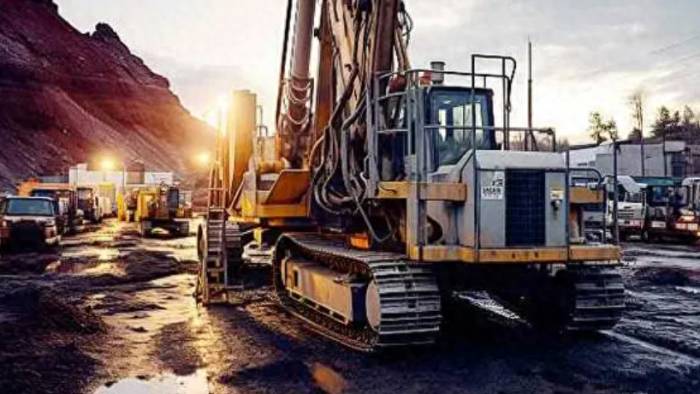On Monday (July 22nd), during trading, LME copper futures fell below $9,200 per ton at one point, hitting a nearly four-month low. This is a stark contrast to the optimistic sentiment in the first half of the year, as the market is now overshadowed by high inventory concerns. At the same time, investors are watching the prospects of Federal Reserve policy and the U.S. election, which could impact the subsequent release of demand on the economic recovery and the development of the new energy industry.
High inventory pressure persists
As an important barometer of the global economy, the trend of copper often has significant forward-looking implications. Since reaching a historical high of $11,104 per ton on May 20th, LME copper has started to weaken with fluctuations. The decline has accelerated again in the past two weeks, with a cumulative drop of nearly 8%. In the same period, the copper futures on the New York Commodity Exchange (Comex) fell nearly 19%, just a step away from a technical bear market.
Advertisement
Industry statistics show that since the second half of the year, copper inventories at the London Metal Exchange (LME), the New York Commodity Exchange (Comex), and the Shanghai Futures Exchange have all increased, indicating weak market demand.
Ole Hansen, Head of Commodity Strategy at Denmark's Saxo Bank, said in a report to First Financial Daily reporters: "When the market is already facing pressure from the retreat of long positions, the continuous rise in total copper inventories is not a favorable environment. This is the first time since August 2021 that copper inventories registered at the world's three major exchanges have exceeded 500,000 tons."
Ewa Manthey, a commodity analyst at ING, said the market is looking for channels to support demand, "If there are no further stimulus measures from the main consumer countries, there is little hope for recovery in the short term. We expect copper and other industrial metal prices to fall further in the short term to reflect the weak demand prospects."
Joe Maher, Assistant Economist at Capital Economics, believes that the outlook for copper supply and demand this year has justified the previous price increase, but these factors do not truly explain all of the nearly 20% increase. As the market boom fades, he expects copper prices to fall by about 10% before the end of the year.
In Hansen's view, there is uncertainty about the duration of this round of copper price adjustments. As futures prices fall below the important technical support of $9,500 per ton, if they fall further, $9,100 per ton will be the next key psychological threshold.
It is worth noting that China's copper demand has stabilized in recent weeks, with the import copper premium at $3 per ton, compared to a discount of $15 per ton in May. At the same time, the People's Bank of China took interest rate cuts on Monday to stimulate the economy, which may alleviate the pressure on demand for metals such as copper to some extent.The Federal Reserve and Trump
As inflationary pressures subside, the Federal Reserve's approach to cutting interest rates is drawing near. The market is currently focused on the U.S. second-quarter Gross Domestic Product (GDP) figures released on Thursday (July 25), and the personal consumption expenditure data to be announced on Friday (July 26). According to the FedWatch data from the Chicago Mercantile Exchange, the money market has fully priced in a 25 basis point rate cut by the Federal Reserve in September.
However, there seems to be uncertainty about the next steps. Several Federal Reserve officials have recently emphasized the need for more data and confidence, without specifying the criteria or thresholds for continued rate cuts. Given that recent economic data has begun to cool, many institutions are questioning whether the Federal Reserve has waited too long. The high interest rates implemented by the Federal Reserve to curb inflation could potentially harm the economy, and in the worst-case scenario, the three-year expansion could enter a recessionary mode.

In the meantime, at last week's interest rate meeting, the European Central Bank, which has already entered a rate-cutting cycle, also acknowledged the challenges of economic cooling and weak recovery. Combined with recent manufacturing PMI and industrial output data from Europe and the U.S., the challenge of demand recovery has intensified.
On the other hand, the U.S. elections are also posing challenges to various demand scenarios. The growing long-term demand for the new energy sector and electric vehicles has previously been a reason for investors to enter the market. However, with Republican presidential candidate Trump maintaining a lead in the polls, the support policies of the Democratic government could be completely reversed.
Last week, Trump reiterated his commitment to curbing inflation by increasing U.S. fossil fuel production during his speech at the conclusion of the Republican convention in Milwaukee. He also reaffirmed that he would stop Democratic spending related to climate change upon taking office. As a result, the clean energy sector in Europe and the U.S. has weakened recently, while the traditional energy sector has made a comeback. First Financial Daily reporters have found that in the past two weeks, ExxonMobil, Chevron, and Occidental Petroleum have seen cumulative increases of nearly 9%, while SolarEdge, Canadian Solar, and Vestas have experienced maximum declines of nearly 10%, prompting several institutions to urgently downgrade their ratings.
The development of electric vehicles is inseparable from copper, with the usage per vehicle being nearly four times that of a conventional internal combustion engine vehicle. Democrats have passed tax credits to promote electric vehicles, and the U.S. Environmental Protection Agency has introduced new tailpipe emission regulations to guide the development of new energy vehicles. In Trump's view, electric vehicles are detrimental to American employment, and he has promised to cancel tailpipe emission regulations if elected.